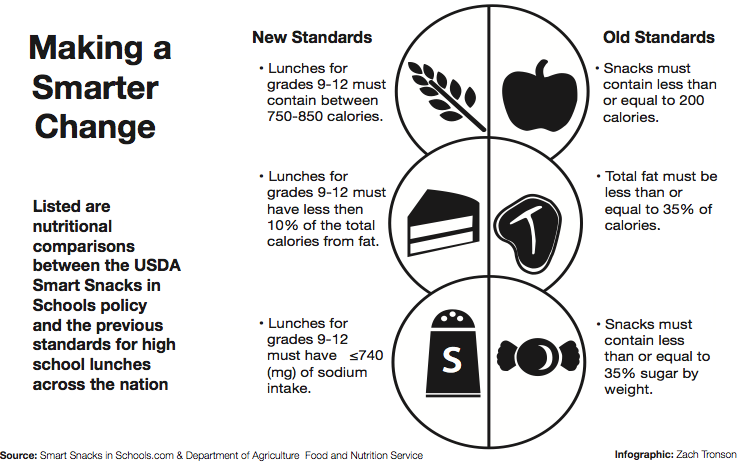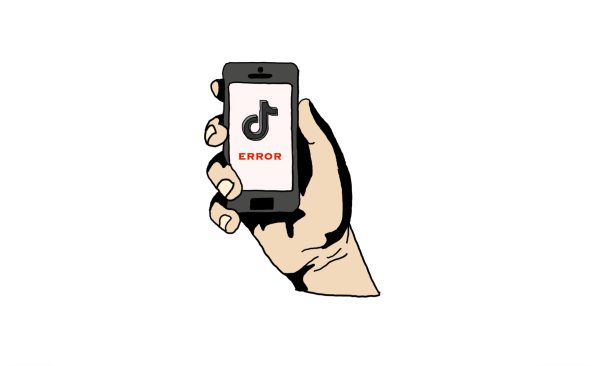Policy implements new health standards
Concern for students’ health regarding nutritional lunch standards results in USDA taking action. A new bill bans junk food from being sold on school grounds and encourages heathier eating habits while providing more nutritious and vitamin rich choices.
April 30, 2014
USDA takes a step in the right direction toward nutrition.
Existing school nutrition standards in America contribute to the obesity epidemic with 40 percent of students consuming processed foods during lunch. The USDA is taking positive steps by passing legislation to promote healthier schools.
According to USDA, students consume 35 to 50 percent of their daily calories at school, most of them empty calories. Schools encourage bad eating habits early in life by feeding students empty calories.
The USDA Smart Snacks in Schools would set limits on the intake of calories and sugar in public schools across America, while encouraging consumption of high-nutrient foods such as fruits, vegetables and whole grains.
Studies conducted by the Women and Children’s Health Network show consuming high rates of sugar and fat lead to decreased energy and focus. Since junk food can be detrimental to students’ performance schools should make sure their students form healthy eating habits early on.
By enacting legislation to reduce calorie intake, the schools will improve not only their students health, but also their performance levels.
In St. Louis Park, a task force met March 2 to begin a Health in the Park program, which works toward better nutrition in schools. This shows our community is taking steps toward improving students’ health.
Students can become involved by submitting comments supporting or opposing the legislation by visiting www.smartsnacksinschool.com
Eliminating the unhealthy options and broadening students’ access of healthier options will be advantageous to the overall health of all students across America.
___________________________________________________________________
Nutrition standards will be ineffective in the long run
Instead of trying to force students to eat healthier, schools need to teach students how to make healthy choices on their own.
According to the USDA, the new USDA’s Smart Snacks in School legislation strictly limits foods available to students in school and goes into effect July 1.
Students will no longer be able to buy “junk” foods or foods that contain mostly empty calories in school.
Schools will only sell fruits, vegetables, dairy, protein-rich and whole-grain rich foods.
However, dozens of convenience stores and fast food restaurants surrounding schools will still sell candy, soda, potato chips and hamburgers.
Unlike younger students, high school students have easy access to these foods and despite school regulations, will continue to eat the foods they choose. Students can continue to make unhealthy choices despite school regulations.
Under the new regulations, schools will lose the money they would have made selling junk food in vending machines and sweets at fundraisers to nearby businesses.
It also seems foolish to try to impose additional restrictions on high school students, who are already used to a great deal of freedom in decisions such as what they eat.
Teaching students about proper nutrition and the importance of exercise is a better option.
Restricting their choices at school leads them to make healthier decisions at all times.
The new Health in the Park task force should instead place its efforts toward teaching students to make healthy food choices and stay active.
This would improve the long-term health of students by teaching them useful healthy habits they can use now and into their future.















